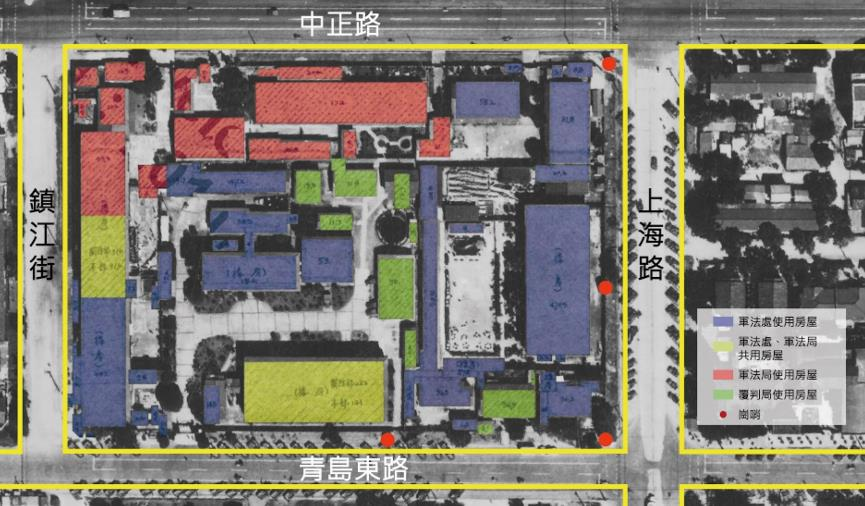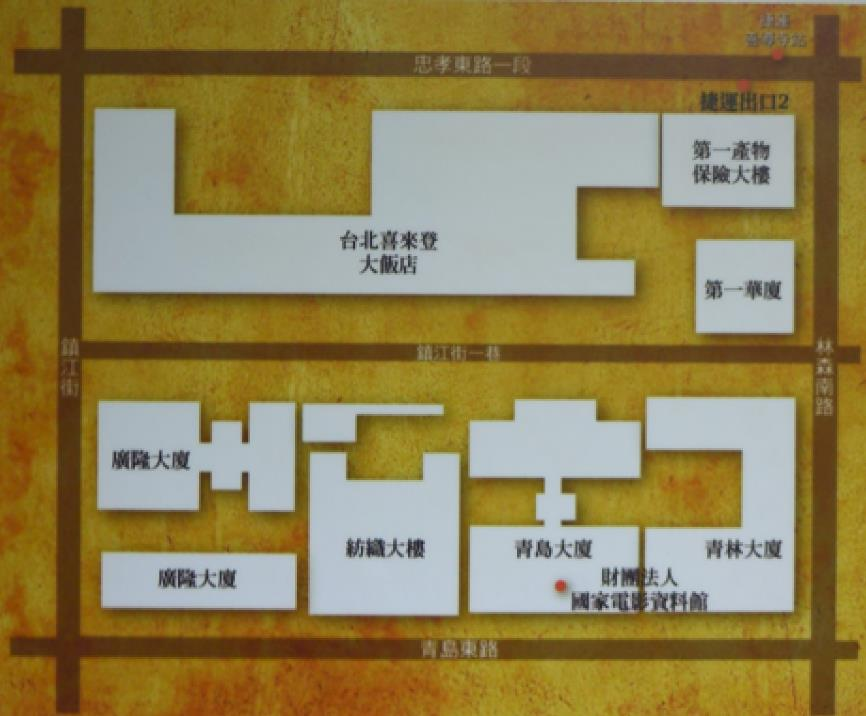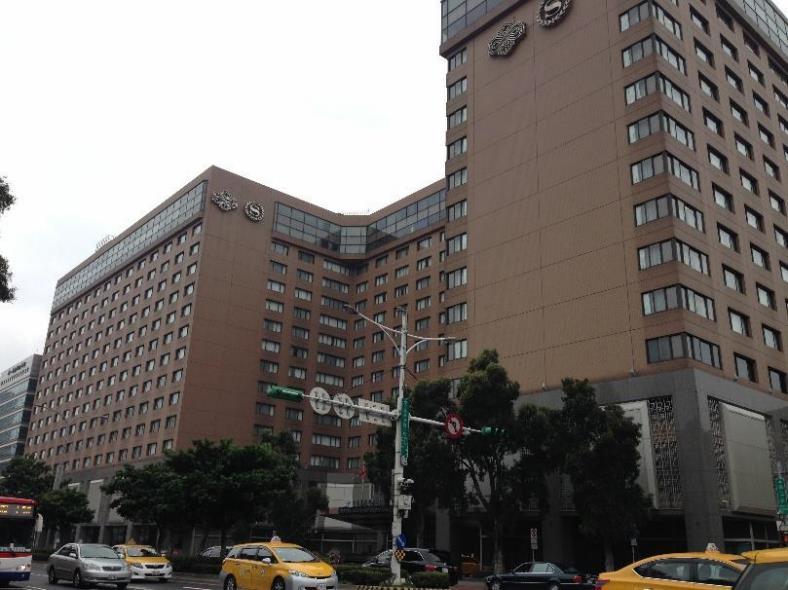Detention Center of the Military Law
Detention Center of the Military Law
From late-Qing military training grounds to postwar side-by-side detention centers: the Military Law Bureau of the Ministry of National Defense and the Military Law Office of the Taiwan Garrison Command
The Detention Center of the Military Law Bureau under the Ministry of National Defense, established on September 1, 1950, was disbanded and restructured as the Military Law Division around the year 2000. It was located at No. 1, Qingdao East Road, Taipei City, in its early years (from 1950 to 1968).
During the late-Qing period, today’s No. 1 and No. 3 Qingdao East Road used to be the location of the Bureau of Commerce and a military training ground. In 1895, in the period of Japanese rule, the area was changed into a camp for cavalry squadrons and a training ground for soldiers. After Taipei City had undergone urban development, the facilities were rebuilt into warehouses for the Army Management Department. Despite having been bombed by the US military during World War II, the buildings were mostly preserved intact. After the war, the Nationalist government took over the area in 1949. At the time, three prisons were situated closely next to each other: the “Taipei Military Prison,” the “Detention Center of the Military Law Office under the Security Command/Garrison Command” and the “Detention Center of the Military Law Bureau under the Ministry of National Defense.” Rebuilt from army warehouses from the period of Japanese rule, the prisons were located in the city block surrounded by today’s Section 1, Zhongxiao East Road to the north, Linsen South Road to the east, Qingdao East Road to the south and Zhenjiang Street to the west (the block surrounding today’s Taipei Sheraton Grand Hotel). The east building on Linsen South Road was administered by the Military Law Bureau, holding mainly political prisoners. The west building on Zhenjiang Street was affiliated to the Military Law Office, holding mainly military prisoners. Both served as the places to hold and try members of the military accused of crimes, and where political prisoners were incarcerated.

▲ Building usage of the Military Law Bureau and the Military Law Office on Qingdao East Road. (Source: Concluding Report on the Investigation into Historical Sites Associated with the White Terror Period in Taiwan , National Human Rights Museum, 2015)

▲ It can be seen on the modern-day map that the location of the buildings used by the Military Law Bureau was approximately the same as that of the Taipei Sheraton Grand Hotel today. (Source: National Human Rights Museum’s concluding report “Taiwan, Island of Prisons.”)
After the large number of arrests during the White Terror in the 1950s, there was not enough space. Thus, along with the Detention Center of the Military Law Office under the Taiwan Garrison Command, the Detention Center of the Military Law Bureau was moved to the former site of the Military Law School, next to the Xiulang Bridge in Xindian (today’s No. 131, Fuxing Road, Xindian District, New Taipei City, currently the Jing-Mei White Terror Memorial Park). After the Military Law Bureau moved out in 1970, its affiliated courts and detention center remained in Xindian. Whether on Qingdao East Road or in Xindian, the Detention Center of the Military Law Bureau and the Detention Center of the Military Law Office under the Taiwan Garrison Command have always been situated next to each other.
The land of the former site on Qingdao East Road was later released for civilian use in 1968. The old buildings of the former Military Law Bureau and Military Law Office were completely torn down, and the northern half of the block became the Taipei Sheraton Grand Hotel it is today, while the other parts were rebuilt into the First Insurance Building, First Huaxia Building, Qinglin Building, Qingdao Building, Textile Company Building and Guanglong Building.

▲ The former Military Law Bureau of the Ministry of National Defense (Zhongxiao East Road) and today’s Taipei Sheraton Grand Hotel. (Source: Concluding Report on the Investigation into Historical Sites Associated with the White Terror Period in Taiwan, National Human Rights Museum, 2015)

▲ The former Military Law Bureau of the Ministry of National Defense (Zhenjiang Street). (Source: Concluding Report on the Investigation into Historical Sites Associated with the White Terror Period in Taiwan, National Human Rights Museum, 2015)
The Military Law Bureau: an important link in the three-stage “review system” of the political cases
During the White Terror period, most political prisoners were arrested and interrogated on the charges of sedition and being communist spies, and were then handed over for military trials, the results of which had to be presented to and reviewed (reevaluated and approved) by the superior military senior officials before the sentences were executed. This shows that the military trials at the time were only a formality; the review system where senior officials were presented with the trial results (the Military Law Bureau of the Ministry of National Defense - the Executive Office of the President - the President) was the actual decision maker behind the curtains. Therefore, even though the Military Law Bureau of the Ministry of National Defense was established in 1950, it was not until 1970, when the Organization Act of the Ministry of National Defense was published, that the Bureau's official legal status was specified. The Military Law Bureau of the Ministry of National Defense was, however, indeed an important link in the “review system” of political cases during the period of martial law.
The Military Law Bureau not only intervened in the trials, it also had its own military court and detention center. The detention center mainly held detained members of the armed forces, but political prisoners were also held. Similar to the Detention Center of the Military Law Office of the Taiwan Garrison Command, the conditions in the Detention Center of the Military Law Bureau were also extremely poor. Peng Keli points out that the prison cells were too small and the prisoners too many; supervision was also extremely strict. Most of those put forward at six or seven o'clock in the morning were sentenced to death and escorted to the execution grounds.

▲ During the trial of the 1960 Lei Chen case, family members awaited the results in front of the Military Law Review Bureau, Ministry of National Defense. The Military Law Review Bureau was located in the same city block. (Source: Central News Agency)
After martial law had been lifted, the Military Trial law, in effect for a total of 41 years, underwent major amendments in 1999, stating the establishment of a district military court, a high military court and a supreme military court, all directly subordinate to the Ministry of National Defense. In this way, military tribunals and military detention centers formerly affiliated to the various branches of the military were abolished in their entirety, including the Detention Center of the Military Law Bureau governed by the Ministry of National Defense itself. In 2000, the former Military Law Bureau was restructured as the Military Law Division. In 2013, it was further amended that the crimes committed by active-service soldiers after the war would no longer be tried by military tribunals, but by ordinary judicial authorities.
基本資訊
關鍵詞
0則留言
本網站使用Cookies收集資料用於量化統計與分析,以進行服務品質之改善。請點選"接受",若未做任何選擇,或將本視窗關閉,本站預設選擇拒絕。進一步Cookies資料之處理,請參閱本站之隱私權宣告。

,今臺北喜來登大飯店_c.jpg)

